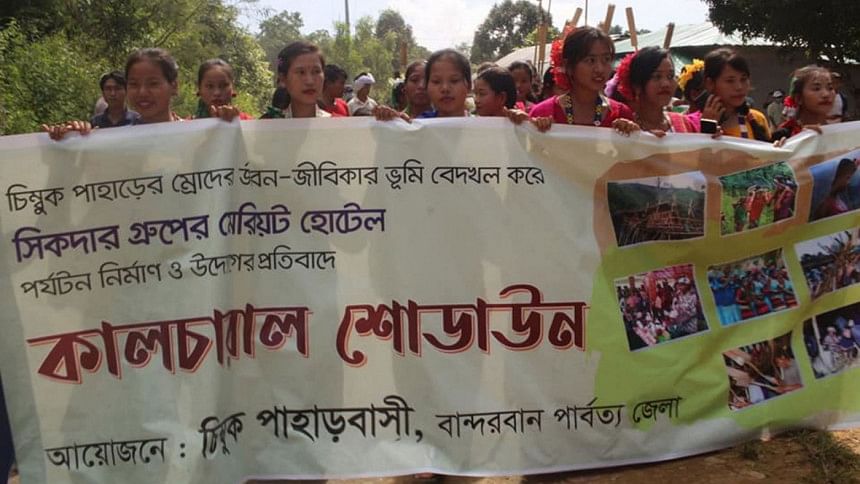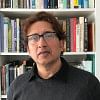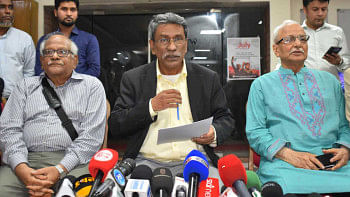Your land is my land: Environmental injustice in Bandarban

Land is the closest thing that we know. We cultivate it, build on it, transform it to meet our needs, commercialise it to maximise economic gain, and derive our identities from its widely varying geographic characters. We try to own as much land as possible because it enables us to exert power.
The banality of land's ubiquity could also mislead us to believe that it is apolitical. It is not. The entire human history could be viewed as a multifaceted narrative of negotiations and conflicts between peoples, nations, societies, groups, and tribes because of their competing claims on land. In Discourse on Inequality (1755), Jean-Jacques Rousseau argued that humans could have avoided "crimes, wars, murders… miseries and horrors" if they remembered how "the fruits of the earth belong to all and the earth to no one!" Rousseau's enlightened view of the earth, belonging to "all," was utopian. The dominant tribe has always proclaimed, this land is my land. The earth never belonged to all.
A hundred years before Rousseau, the English political theorist James Harrington explained that the shape of government depends on and reflects the way the earth is owned, because those who controlled the most land could sustain the largest number of soldiers. John Adams, the second President of the United States, encapsulated the politics of land ownership in this pithy statement: "Power follows property." Colonialism has always been about conquering somebody else's land. The East India Company's territorial occupation that began in Bengal in 1757 reached all the way to the Mughal capital of Delhi in half a century. And the native Indians were forced to pay taxes to a foreign private company for simply living on their land.
The other day I was reading about the recent protest by the members of the Mru indigenous community. It was against the occupation of their ancestral land in the Chittagong Hill Tracts (CHT) and the construction of a five-star resort and entertainment centre. This project, we are told, is a joint venture between the Army and Sikder Group, a private company. It was melancholic to see a handful of Mru members and their lonely protest on the streets of Dhaka, as if this complex's deep penetration into the wilderness of the CHT is a minor environmental headache to the indigenous people. Their placards read: "Do not desecrate nature," "My homestead is not for business," and "Our land our right." The ownership of land in the CHT has remained a contentious political subject. A Chakma leader once stated that, "the land problem is the main problem."
The resort project in Bandarban exemplifies an archetypal (and vastly asymmetrical) fight for land. It appears that the owners of the complex could not care less about the indigenous communities' veneration of their land as sacred. Jum land is not just their main source of livelihood, but also the site of their spiritual and existential foundation. Unfortunately, in the wake of the resort project fiasco, the news media reduced the indigenous people's grievance into a singular lament for the loss of livelihood. This reduction hurts their cause. What do they mean when they cry, "do not desecrate nature"? The moral root of their protest harkens back to the loss of their spiritual home: the land. The philosopher Glenn Albrecht calls this melancholic feeling "solastalgia"—a kind of eco-grief experienced by a community when it feels that its environmental umbilical cord has been severed.
The Bandarban resort project is a tragic real-life replay of James Cameron's eco-conscious blockbuster, Avatar (2009). The story goes like this. To solve planet Earth's energy crisis, an American mining corporation has established a private army camp on a distant planet to drive away its aboriginal people from their sacred land which sits atop a vast deposit of a rare new mineral. The marauding corporation figured that the only way to destroy the spiritual cohesion of this indigenous community would be to uproot the giant tree they consider sacrosanct. Once the tree is destroyed and the community dispersed, the mineral would be ready for extraction. Avatar is a celluloid indictment against the kind of environmental injustices that the Bandarban resort project exemplifies.
Why do we need a five-star hotel at the heart of the land that indigenous communities consider their spiritual home? Where is our national outrage at what appears to be no less an act of eco-devastation? The Co-owner and Sikder Group tried to placate the situation by arguing that they have signed a 40-year lease for a 20-acre plot on the hills of Bandarban. This land would be used to build a resort, located at least 2.5 km away from the nearest indigenous settlement. However, no third-party environmental impact assessment report has been produced.
Would the environmental effects of a five-star hotel be contained within the "allotted" 20-acre site? Of course not. Its carbon footprint will have far-reaching ramifications for the area. The building heat will disrupt the ecological balance. Roads must be made for cars which will emit carbon monoxide. Vehicular roads will cut off the network of existing streams, rivulets, and creeks. To secure its own water source in a hilly terrain, the resort engineers will build dams on canals and streams, depriving at least 70 percent of indigenous people of natural water sources. Then, there will be tourists and their usual noise. The disruptions will dislodge the wildlife. If the proposed resort is "successful," then others would be incentivised to follow suit. A steady gentrification of indigenous lands will slowly decimate the ecological continuum of the place. This is discrimination and colonisation by development.
What we need are not more resorts, but national parks. People should be able to visit the CHT without disrupting the indigenous way of life. National parks, protected by environmental laws and supported by walking trails, bike paths, birdwatching, knowledge-based botanical paths, and respect for the rights of indigenous people, can create a sustainable model for eco-tourism. Indigenous community members can be hired as park support staff.
The controversial Bandarban resort project also reveals an alarming trend: increasing commercialisation of the state's mission. This could create a dangerous precedent, compromising national security in times of territorial crisis. The last thing Bangladesh needs is disciplined institution's foray into land business. On the other hand, a collaborative partnership between that institution and indigenous communities to establish protected national parks in the CHT could be a win-win proposition.
Bangladesh is a small country with a growing population. That means the demand on land will continuously rise. The power-wielding class will start occupying more and more land as the very source of its power. That is why we need a comprehensive regional plan for the entire country. The three districts of the CHT together cover 10 percent of the country's landmass. How do we protect its unique geographical and environmental traits?
Land, as Leo Tolstoy's parable, "How much land does a man need?" (1886), reminds us, has an uncanny power to punish humans for their greed. Tolstoy's protagonist, a landowning peasant named Pakhom, wanted to buy as much land as possible from a distant community in the south of Russia. That community offered him a unique deal. He could buy the area he encircles, walking, in a day. He agreed and, growing greedy, kept on enlarging the arc of the circle. Alas, by the end of the day he had to run inhumanely to complete the circle. Exhausted, he fell where he began in the morning and died. In the end, he only needed a land six feet long and three feet wide. His grave.
A luxury hotel at the heart of lands that indigenous communities revere as their spiritual home presents all the optics of domination. It is a blatant case of environmental injustice. On the 50th anniversary of Bangladesh's independence, the country's national purpose must include a mission of justice for all.
Adnan Zillur Morshed, PhD, is an architect, architectural historian, urbanist, and educator. He teaches in Washington, DC, and serves as Executive Director of the Centre for Inclusive Architecture and Urbanism (Ci+AU) at BRAC University. [email protected]

 For all latest news, follow The Daily Star's Google News channel.
For all latest news, follow The Daily Star's Google News channel. 



Comments